Qilin – One Of Four Noble Animals In Chinese Myths And Legends
A. Sutherland - AncientPages.com - In Chinese mythology, Qilin (Kirin) is one of the "Four Benevolent Animals, " including the tortoise, dragon, and phoenix. All four noble ones ruled the Yellow Emperor's gardens - the ancestor of all Chinese people and the father of Chinese civilization.
Qilin is one of four benevolent and sacred animals in Chinese mythology. Credit: tuayai - Adobe Stock
An ancient Chinese myth tells of the god Pangu, who created the heavens and the earth out of chaos. These four divine creatures assisted him. When the work was finished, the Qilin retreated into the dense forest, and since then, he was known as an animal of good omen. One Chinese legend tells of Emperor Fu Xi, who lived two thousand nine hundred years before our era. One day, he saw a magical qilin rising from the Yellow River.
His back was covered with magical markings the Emperor had tried to copy. These signs later became the basis of Chinese writing.
Wonderful Peaceful Creature Walking On The Water Surface
Although his appearance suggests an evil creature, the Qilin is a benevolent, peaceful animal that can walk on the water's surface, soar to the sky, and on the ground without bending down the grass.
He symbolizes the upcoming birth of the sage and the personification of humanity and humanism.
Over the centuries, this divine creature has been known to several cultures and traditions of East Asia. It was described in many different ways because Qilin's appearance represents a mixture of deer, lion, and fish. Still, it can also have a tiger's body, a dragon's head, and an oxtail.
In other descriptions, the Qilin is covered with fish scales or flames and has often been compared to a unicorn having a unique horn in the middle of his forehead.
However, it does not resemble a horned horse, though he is occasionally called a "Chinese unicorn" in the Western world.
Qilin Never Harms The Living Creature
The creature symbolizes prosperity and peace, never harming any plants, animals, or even the most minor bug, but sometimes can get aggressive to punish injustices and the wicked.
Gold gilt wood carving of Qilin on Kitano Temple. Credit: micromagic - Adobe Stock
Legends say the Chinese unicorn is considered the patron saint of all deer, and while the Chinese Phoenix bird is entitled the queen of birds, the divine Qilin is respected as the king among the beasts.
Qilin Mentioned in Confucius' Times
The earliest references to the Qilin are in the 5th century BC ancient Chinese narrative history, Zuo Zhuan (or "Zuo Chronicle"), which describes the events in China 722-468 BC and later, the animal made appearances in a variety of subsequent Chinese works of history and fiction.
The Qilin is believed to have announced the birth of Confucius, c. 552 BC, and the creature's stone depictions continued to appear in the Late Han Dynasty (25-220 AD). In Chinese art, sages and immortals were depicted riding the Qilin to emphasize their uniqueness. When carved on stone tombstones, the Qilin was believed to ward off evil spirits from them and peacefully escort the souls of the dead to heaven. In old China, the Qilin's image was embroidered on the robes of high-ranking imperial courtiers.
Good Omens And Ritual Dance "Kirin-Lion"
Every spring, the ritual dance "Kirin-lion" is performed in one of Tottori's temples. Dancing, the "lion" seeks to soar up and fly away into the sky.
Perhaps even today in China and Japan, the Qilin-kirin is a messenger, handing over to God the people's desire to receive a generous harvest to live in prosperity and security because the Qilin symbolizes good omens, wealth, success, longevity, admiration, and a successful career for high-ranking officers and prominent officials.
Qilin And Five Elements
The Qilin is the incarnation of the five elements, the five symbolic colors, and the five virtues. In Feng Shui, it symbolizes a long life, celebration, splendor, joy, famous descendants, and wisdom.
Using images or figurines of this wondrous animal is recommended for women who want to have a child. Any mascot of the Qilin must face the exit of the living room.
According to the Chinese tradition, the Qilin brings peace and protection to your home and protects against the influence of harmful flying stars.
It must be placed in the living room diagonally from the front door so it always faces the entrance, scaring away enemies and all kinds of problems from your home. While sitting on gold bars and coins, it brings wealth and prosperity.
The presence of the Qilin attracts the powerful cosmic breath of the dragon, thus bringing good luck to all the house's inhabitants. In ancient Chinese mythology, the dragon was a highly significant creature that became a symbol of the Emperor, and his throne was sometimes called the Dragon Throne. Ancient Chinese believed dragons were in control of the weather and water. These creatures were said to be able to manipulate oceans, floods, tornadoes, and storms.
There are nine distinctive Chinese dragons, some serpent-like creatures with large bodies and long heads. In China, the dragon is a benign creature that brings wisdom, power, and luck. They are famous for their goodness, warding off evil, protecting the innocent, and bringing safety to all.
Written by – A. Sutherland - AncientPages.com Senior Staff Writer
Updated on February 15, 2024
Copyright © AncientPages.com All rights reserved. This material may not be published, broadcast, rewritten or redistributed in whole or part without the express written permission of AncientPages.com
More From Ancient Pages
-
 We Need To Look Underwater To Understand Our Past – New Study
Archaeology | Apr 14, 2023
We Need To Look Underwater To Understand Our Past – New Study
Archaeology | Apr 14, 2023 -
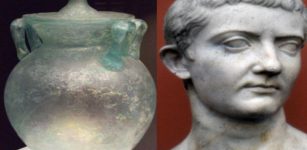 Flexible Glass – Lost Ancient Roman Invention Because Glassmaker Was Beheaded By Emperor Tiberius
Ancient Technology | Jul 27, 2023
Flexible Glass – Lost Ancient Roman Invention Because Glassmaker Was Beheaded By Emperor Tiberius
Ancient Technology | Jul 27, 2023 -
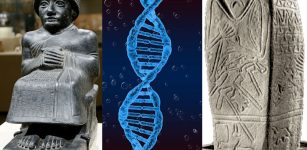 Ancient DNA Provides Comprehensive Genomic History Of The “Cradle Of Civilization”
Archaeology | Oct 10, 2022
Ancient DNA Provides Comprehensive Genomic History Of The “Cradle Of Civilization”
Archaeology | Oct 10, 2022 -
 How Gilgamesh Defeated Mighty King Agga Of Kish
Mesopotamian Mythology | Oct 16, 2016
How Gilgamesh Defeated Mighty King Agga Of Kish
Mesopotamian Mythology | Oct 16, 2016 -
 Unraveling the mystery of the Rhynie Man
News | Aug 24, 2015
Unraveling the mystery of the Rhynie Man
News | Aug 24, 2015 -
 Bad King John’s Lost Treasure May Be Hidden Near The Walpole Marsh In The Fenlands – Archaeologists Say
Archaeology | Mar 27, 2024
Bad King John’s Lost Treasure May Be Hidden Near The Walpole Marsh In The Fenlands – Archaeologists Say
Archaeology | Mar 27, 2024 -
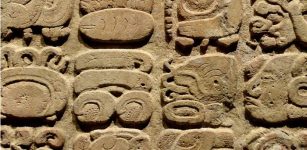 On This Day In History: Spanish Priest Diego de Landa Burned The Sacred Books Of Maya – On July 12, 1562
News | Jul 12, 2016
On This Day In History: Spanish Priest Diego de Landa Burned The Sacred Books Of Maya – On July 12, 1562
News | Jul 12, 2016 -
 Our Understanding Of Human Prehistory And Societies Is Wrong – Scientists Say
Featured Stories | Nov 3, 2022
Our Understanding Of Human Prehistory And Societies Is Wrong – Scientists Say
Featured Stories | Nov 3, 2022 -
 Archimedes From Syracuse – Master Of Science Whose Legacy Still Remains Powerful
Featured Stories | Sep 20, 2017
Archimedes From Syracuse – Master Of Science Whose Legacy Still Remains Powerful
Featured Stories | Sep 20, 2017 -
 New Light On The Complex Evolution Of Our Feet
Evolution | Nov 22, 2023
New Light On The Complex Evolution Of Our Feet
Evolution | Nov 22, 2023 -
 On This Day In History: Julian ‘The Apostate’ Died During The Retreat From The Sassanian Empire – On June 26, 363
News | Jun 26, 2016
On This Day In History: Julian ‘The Apostate’ Died During The Retreat From The Sassanian Empire – On June 26, 363
News | Jun 26, 2016 -
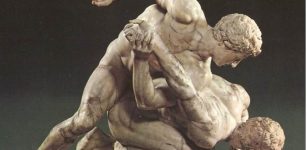 What Was The True Meaning Of Pankration And Other Ancient Games
Archaeology | Sep 11, 2021
What Was The True Meaning Of Pankration And Other Ancient Games
Archaeology | Sep 11, 2021 -
 Sphinx Statue With A Smiley Face And Two Dimples Unearthed In Qena, Egypt
Archaeology | Mar 6, 2023
Sphinx Statue With A Smiley Face And Two Dimples Unearthed In Qena, Egypt
Archaeology | Mar 6, 2023 -
 First Human Culture Lasted 20,000 Years Longer Than Thought – New Study
Archaeology | Jan 11, 2021
First Human Culture Lasted 20,000 Years Longer Than Thought – New Study
Archaeology | Jan 11, 2021 -
 Mysterious Gobi Sea And A Huge Land Inhabited By The Real Sons Of God
Featured Stories | Aug 20, 2018
Mysterious Gobi Sea And A Huge Land Inhabited By The Real Sons Of God
Featured Stories | Aug 20, 2018 -
 More Anglo-Saxon Burials And Artifacts Found In Lincolnshire, UK
Archaeology | Jan 11, 2024
More Anglo-Saxon Burials And Artifacts Found In Lincolnshire, UK
Archaeology | Jan 11, 2024 -
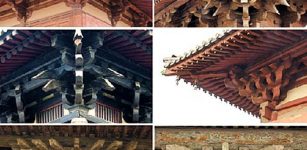 Ancient Secrets Of Dougong Brackets: How 2,500-Year-Old Buildings Could Survive Earthquakes
Ancient History Facts | Jul 31, 2017
Ancient Secrets Of Dougong Brackets: How 2,500-Year-Old Buildings Could Survive Earthquakes
Ancient History Facts | Jul 31, 2017 -
 Anatolia’s Seyitömer Mound Was Inhabited In Bronze Age, Achaemenid, Hellenistic, And Roman Times
Archaeology | Aug 17, 2020
Anatolia’s Seyitömer Mound Was Inhabited In Bronze Age, Achaemenid, Hellenistic, And Roman Times
Archaeology | Aug 17, 2020 -
 Djémila – Lost City Of The Ancient Kingdom Of Numidia
Featured Stories | Jun 28, 2021
Djémila – Lost City Of The Ancient Kingdom Of Numidia
Featured Stories | Jun 28, 2021 -
 Abric Romaní Cave: New evidence indicates Neanderthals used to heat water some 60,000 years ago
Human Beginnings | Aug 31, 2015
Abric Romaní Cave: New evidence indicates Neanderthals used to heat water some 60,000 years ago
Human Beginnings | Aug 31, 2015


